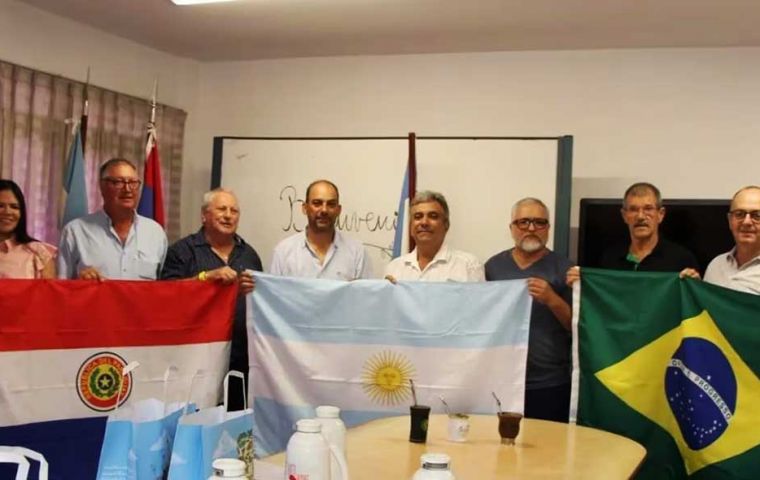The recently-launched South American Federation of Yerba Mate Producers is aiming to “protect and promote” the herbal drink, with participation from growers in Argentina, Brazil, and Paraguay.
The founders of the new guild agreed that Argentina would hold the first presidency of the new guild, with it rotating to another country after three years, it was announced at the headquarters of the Argentine Yerba Mate Institute, with Nelson Dalcolmo of the Argentinian National Institute of Yerba Mate (INYM) appointed as the first president.
Paraguay will host the group’s permanent headquarters, in the Paraguayan Yerba Mate Center, with sub-headquarters in both Argentina and Brazil.
Alongside Dalcolmo, INYM sent Claudio Marcelo Hacklander and Jonas Petterson as representatives; the Brazilian Institute of Erva Mate (IBRAMATE) sent Alberto Tomelero, Cleomar Henrique Konzen, and Ismael Rosset, and attending on behalf of the Paraguayan Yerba Mate Center were Eduardo Oswald, Naida Alderete, Héctor Sauer, and legal counselor Alejandro Úbeda.
“Each of these three countries has a particular emblematic product made from yerba mate; for Brazilians, it is chimarrão; in Paraguay, they have tereré and we Argentines have mate,” explained Hacklander in a radio interview.
“The main agenda is to work on achieving product innovation and worldwide promotion of yerba mate to be able to enter new markets and leave aside a little bit of that selfishness and competition that we always think that where we enter, the Paraguayans or Brazilians enter and take the market away from us. It is not like that, we can work together and leave aside that particular selfishness. We want the world to know the virtues of yerba mate and we can cover more spaces that today are not precisely within the yerba mate business,” he added.
“Our Federation comes to highlight a legacy shared by the three countries: that of being the only producers of yerba mate in the world, with more than 500 years of history, culture, and roots in our communities, energizing the entire region,” Dalcolmo noted.
“We are brothers, we share not only mate, chimarrão, and tereré but also the history of this region. We have an enormous potential to expand the frontiers of our product in a world that seeks healthy and natural foods like ours,” he went on.
“It is a historic day for us,” the Brazilian Tomelero declared. “We have managed to unite the three yerba mate-producing countries and now we will work on the development and growth of the activity. We will start by focusing on producers, many of whom are family farmers, and we will look for development alternatives. Our goal is to spread the health benefits of our yerba mate, attract new consumers, and achieve a balance of profitability for all those involved in the yerba mate chain.”
Paraguay’s Oswald was very excited by the progress being made by the new federation. “We have fulfilled a dream; we have been working for more than a year to achieve this, and today we are concluding the organisational part, with statute and board of directors. We will define the joint work according to the priorities of each country.”
“The desire is integration; we talk a lot and sometimes we do not get out of those words, and today we are moving forward. This is important taking into account how the world is shaping up, with globalization, and we, together, the three countries, decided to join efforts so that our product continues to gain market share,” added the Paraguayan representative.
All three types of yerba mate-based drinks are proven to have health benefits, such as being anti-inflammatory, anti-oxidising, and anti-anxiety (anxiolytic). Traditionally, chimarrão and mate are mixed with hot water, whereas Paraguayan tereré is mixed with ice-cold water.
Tereré is considered such an important part of Paraguayan culture that it has it’s own national day – which this year was on Saturday 24th February.


